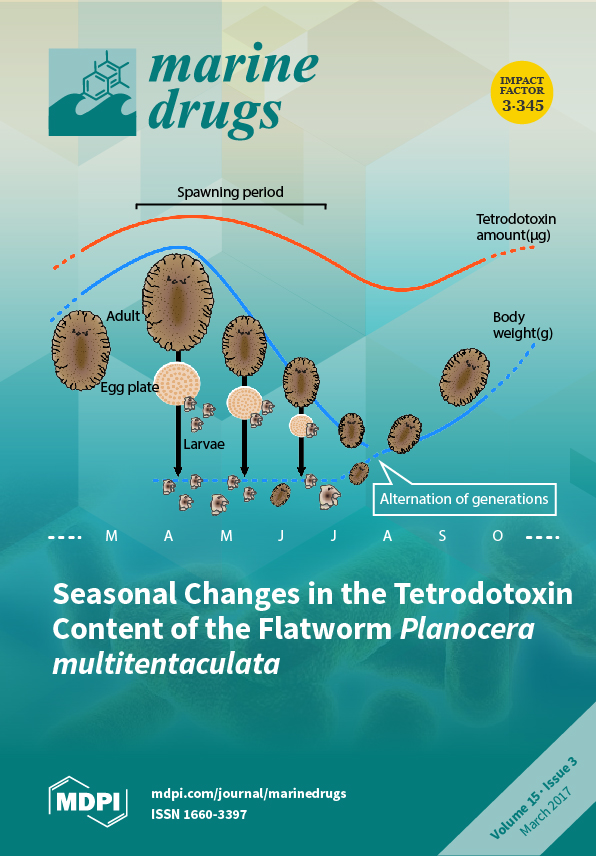Four new compounds, including two isocoumarins, pestaloisocoumarins A and B (
1,
2), one sesquiterpenoid degradation, isopolisin B (
4), and one furan derivative, pestalotiol A (
5), together with one known isocoumarin, gamahorin (
3), and three
[...] Read more.
Four new compounds, including two isocoumarins, pestaloisocoumarins A and B (
1,
2), one sesquiterpenoid degradation, isopolisin B (
4), and one furan derivative, pestalotiol A (
5), together with one known isocoumarin, gamahorin (
3), and three chlorinated benzophenone derivatives, pestalachloride B (
6), pestalachloride E (
7) and a mixture of pestalalactone atropisomers (
8a/8b), were isolated from a culture of the fungus
Pestalotiopsis heterocornis associated with sponge
Phakellia fusca. These new chemical structures were established using NMR and MS spectroscopic data, as well as single-crystal X-ray crystallographic analysis and CD Cotton effects. All of the isolated compounds were evaluated for their antimicrobial and cytotoxic activities. Isocoumarins
1–
3, showed antibacterial activities against Gram-positive bacteria
Staphylococcus aureus and
Bacillus subtilis with MIC values ranging from 25 to 100 μg/mL and weak antifungal activities. Chlorinated benzophenone derivatives
6–
8 exhibited antibacterial activities against
S. aureus and
B. subtilis with MIC values ranging from 3.0 to 50 μg/mL and cytotoxicities against four human cancer cell lines with IC
50 values of 6.8–87.8 μM.
Full article






